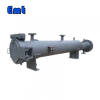
Item
Pipe Fittings
Category
Piping
Code
-
Moc
-
Stock Location
-
Dimension
-
Stock
89
Created On
26/09/2022
Updated On
26/09/2022
Description
Pipeline Pig Traps are referred to as the sending and receiving ball cylinders. It is a kind of pipeline accessory and is widely working in various mediums conveying pipelines. This product is generally installed at both ends of the main pipe. It can transmit and receive pigs. This product can also be swept before the pipeline is put into production. And after the production of wax cleaning, oil sweeping, and descaling.
Servers and Receivers
The teeing device is generally made of steel pipe of the same diameter as the pipeline to be cleaned. (or around 100 larger, since the spheres are not of equal size). A flange cover (for ball loading) is installed on its front end and there is an air inlet (dimensions are determined by air volume). It is used to connect with the pipeline at its rear end, and it can be welded or flanged (with reducing diameter). Its length is determined by the size of the sphere.
The catching device is similar to the serving device. But only the air release valve is set at the front (above) for pressure relief in the pipeline after the ball is collected. Or there is a sewage outlet in its lower part to remove the sundries and fluid in the front of the ball.
Then there are many types of pigs used for pipeline pigging, which can be roughly divided into three types:
Pigging ball (spherical rubber ball);
Cup pigs (sizing pigs, diameter measuring pigs, isolation pigs, two-way pigs, etc.)
Foam pigs (high, medium, and low-density foam pigs).
The advantage of the leather cup pig is that it maintains a fixed orientation when operating in the pipeline. It can also carry various testing instruments and other devices. Such as detecting the deformation of the pipeline, replacing the medium and cleaning the space inside the pipe, removing the rust on the pipe wall, etc.
Pigging Purpose:
Firstly, natural gas pipelines in operation: remove accumulated water, light oil, and methane hydrate iron oxides inside the pipelines. There are also corrosive substances such as carbide dust, carbon disulfide, and hydrosulfuric acid. It can also reduce the corrosion damage to corrosive substances to the inner wall of the pipeline. Re-clarify the direction of the pipeline and detect the deformation of the pipeline. It can also check the valve integrity along the line and reduce the working back pressure.
Secondly, crude oil pipelines in operation: pigging pipelines before detection in pipelines, and low-volume intermittent operation of oil pipelines. This can also remove condensed oil, wax deposits, and scaling inside the pipeline. Therefore, the pipeline can achieve the purpose of reducing the oil back pressure, reducing the friction resistance, and reducing the oil temperature.
At last, chemical materials and edible oil pipelines: Clean the pipelines of polymeric materials, isolate different pipeline transportation media to achieve single-pipe multi-variety transportation and measure pipeline transportation media.
Working Principle:
In the pipeline to be cleaned, put the corresponding series of pigs according to the requirements of the operation. The outer edge of the pig skin cup is elastically sealed with the inner wall of the pipeline. At this time, the pressure difference generated by the medium transported by the pipeline is the driving force. So this power pushes the pigs along the pipeline. Relying on the scraping and scouring action of the pig itself or its equipment to remove the scale or deposits in the pipeline.
Instructions for use of sending and receiving ball cylinder device
1: When the pigging ball arrives, it may stop between valve a and the tee.
2: Partially close valve b to push the pigging ball into the receiver.
3: When the Pipeline Pig Traps and is detected by the pigging ball passing indicator, open valve b, and open and close valve a and valve c.
4: Then open valve d and valve e to depressurize the receiver.
5: After confirming that the receiver has no internal pressure, open the quick-opening blind plate and take out the pigging ball.
6: At last, lose the quick-opening blind plate and confirm that it is closed correctly. The ball device is only installed and connected to the pipeline ball valve through the ball opening.
The Equipment of Pipeline Pig Traps:
The end of the equipment barrel is provided with a quick-opening blind plate device. So it is used for taking out the pig and has the characteristics of a simple switch and sealing. An interlocking device is installed on the ball barrel. It can make the device unable to open the quick opening blind plate under the condition of pressure. Therefore, for equipment and personnel, the function of the venting ball valve is to purge the pipeline and replace the gas before the pipeline is used. When the pigging is over, the pipeline ball valve is closed and the venting ball valve is opened. The excess gas in the tee is vented to the atmosphere.
At this time, the pressure in the pipeline is reduced so that the interlocking device plays the role of releasing. The drain ball valve is used to remove dirt. When a lot of dirt in the pipeline causes the ball valve to be blocked, the user can open the sewage ball valve. This will remove dirt smoothly. Then the pressure gauge is used to display the pressure of the gas in the cylinder. It is used via a needle valve control. The ball indicator is installed on the line on the tee side. When the pig passes, it indicates that the ball has passed, the bypass ball valve is used to boost the pressure in the pigging cylinder, and the ball collecting device is connected to the pipeline ball valve through the goal port.